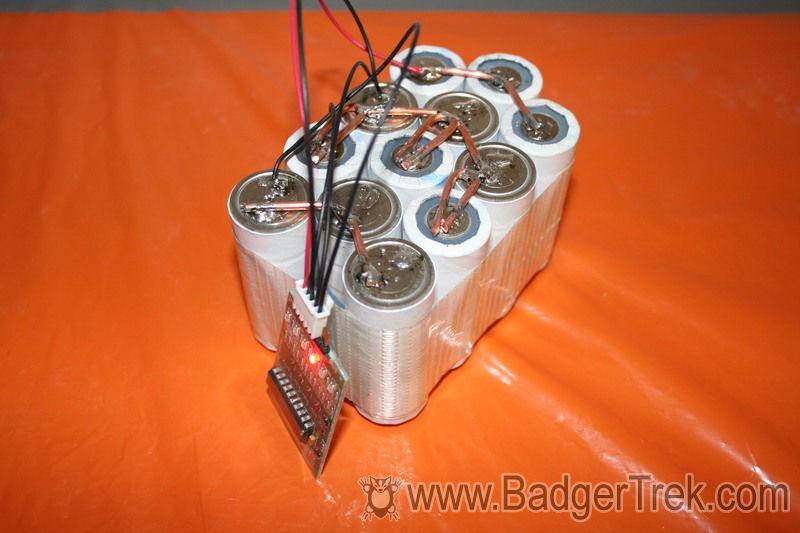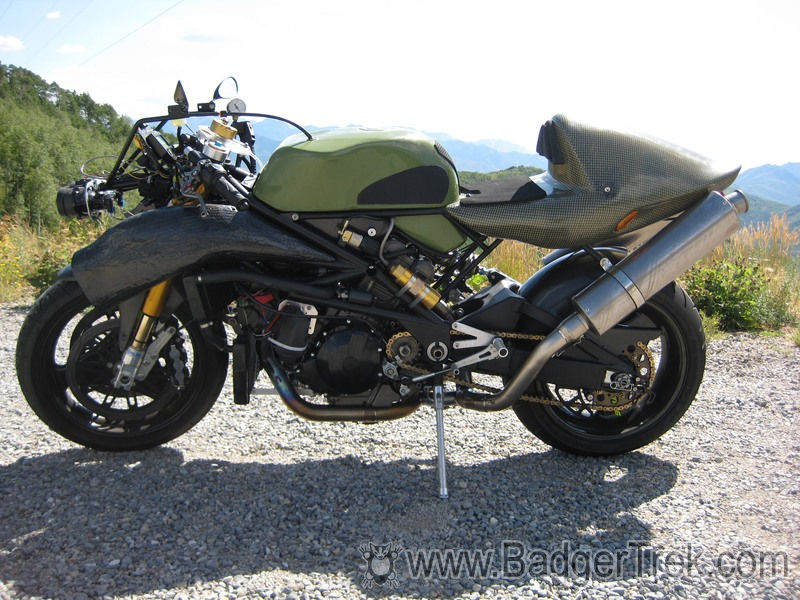www.BadgerTrek.comAbout/ContactWeb LogOur Camper Van
Resources:Hobbies:MotorcyclesAmy's CakesOutboard Hydroplane RacingRadio Controlled Toys |
Building a Lithium Starting Battery

As I built my bike up, my largest guiding principle was to have functionality with minimum mass and reasonable cost. Looking at the various components of the bike, the battery is a very large chunk of mass, and it seemed with modern rechargeable battery technology might offer me a way to save a few pounds.
Options:
The stock battery for a Suzuki TL1000R is a 12ah lead acid AGM with a weight of about 7.5lbs, a YT12A-BS.
One option was to use a smaller battery, as some folks have had luck with a 3lb 4ah for a bit of time, but finding issues with starting a few months later. I did not want loose starting abilities so this option seemed out.
At this point I turned my research to the newer rechargeable battery technologies that provide greater energy/weight ratings than lead-acid. My dirt-bike uses a small NiCad battery to power the lights and horn when the engine is off. By some reading I found the latest in high-power rechargeable tools were A123 Lithium Iron Phosphate cells. These cells provide very high current discharge abilities (as needed for starting), fairly simple charging (4 cells in series would be 14.4volts), and a reasonable life.
Building:
I dug up a bunch of information on the A123 cells from various RC airplane forums to find good sources and ideas (example here). I chose a configuration of 3parallel x 4series for a total of 12 cells (so I had to get 2 packs as each holds 10 cells). This gives me a battery capacity of
6.9Ah (2.3Ah * 3) and a theoretical 10sec load ability of 50C (350A). Nominal voltage is 14.4v, so it doesn't even need fancy charging or voltage adjustment to wire right in.
The cells I sourced from a couple of DeWalt DC9360 Li-Ion Battery Packs. For periodic balancing I obtained an Astroflight Blinky Lithium A123 Battery Balancer
to keep the cells evenly charged. For connecting the battery to the bike I used 6GA welding cable terminated with 75A Anderson Power Poles (150A short-term load). As each DeWalt pack comes with 10 cells, I purchased 2 packs and had 8 cells left over.
The cells were taped with fiberglass tape and then soldered together with 12ga household copper, finally covered in kaptic tape to prevent shorting. The balancer came with a harness that was integrated into the battery at each cell interface, and then all was put into a large heat-shrink tube.
Final weight with the connectors, protective tubing, etc, came in at 2lbs 1oz.
The leftover 8 cells I ended up with can make a 2/3 size pack if this is plenty. Presuming I make another battery of these or sell them off, the battery will have cost about 150$ in total materials for a loss of 5.5lbs. Probably the cheapest weight reduction I could do beyond throwing things away.
For a battery box I used the bottom of one of the DeWalt battery packs I had disassembled as it was of perfect size, and much lighter than a TL battery box.
After a month of starts I am having no troubles at all. Since the rest voltage of the battery is 14.4v instead of 12.6 of a lead-acid, the lights are a bit brighter, and the starter cranks a bit livelier than with a standard battery at startup.
During the riding season I am leaving the balancer plugged in, however it does slowly drain the battery so it will be removed whenever the bike is away for a week or more.

Back up to the bike build page...